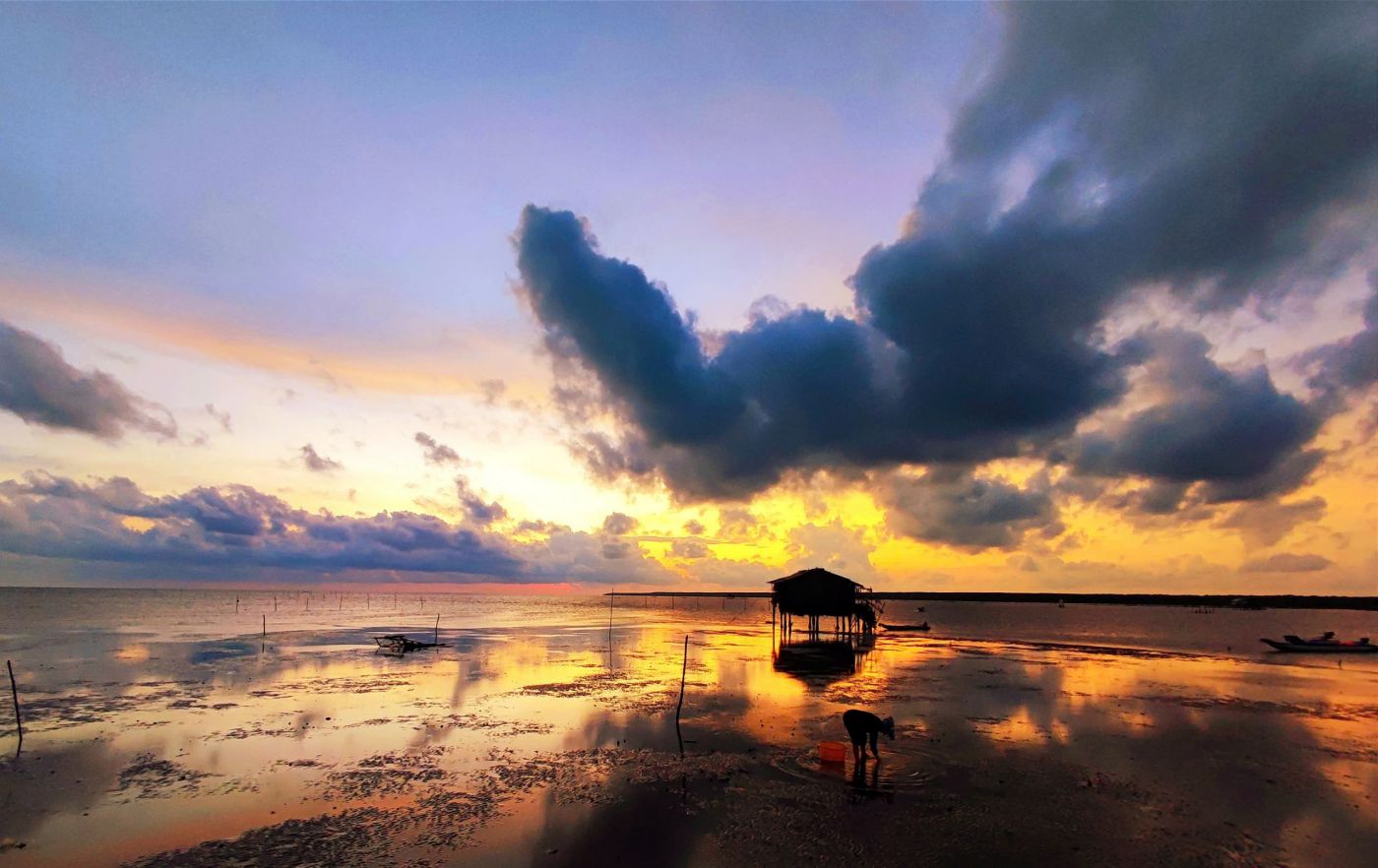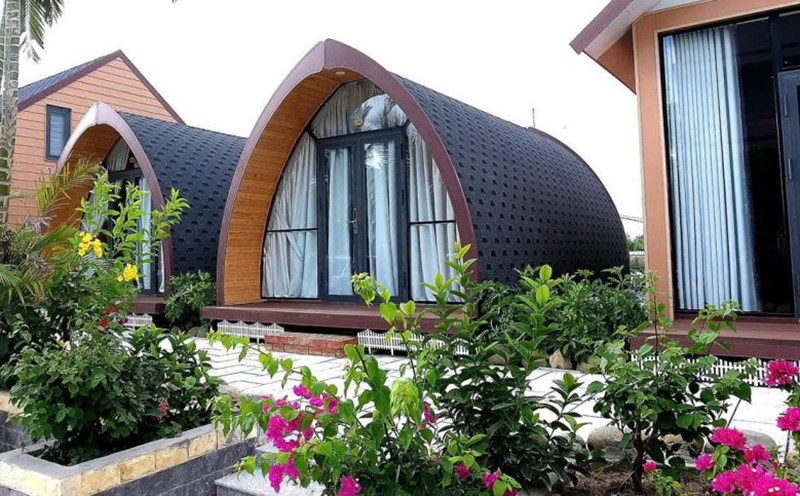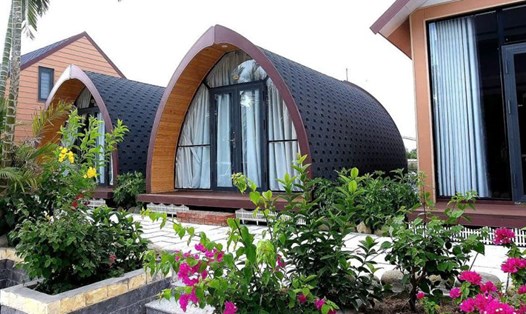When the Cape is not just the Cape
My first cross-Vietnam journey took place in 2000, and it ended with a mistake that I still regret to this day: I arrived in Ca Mau without making the effort to visit the U Minh Thuong forest, the 2,228th Ramsar site of planet Earth.
In this life, there are things that if you just pass by, will be lost forever. Two years later, a firestorm broke out, burning 3,212 hectares of primeval forest on peat land, creating the largest natural disaster in Vietnam that lasted for 20 days.
Even though the forest regenerates very quickly, U Minh Thuong is no longer the U Minh Thuong we once knew. I never had the chance to enter the space of “the scent of Ca Mau forest” that “Old Man of the South” described in each of his short stories, notes, and essays about this land.
Because, in the limited time of that long day, I chose to go to Nam Can town to take a boat to Dat Mui. That difficulty of the river has now been eliminated by the road route, but that is something that only appeared in 2016, not at the beginning of the millennium.
The purpose of the train trip to Ca Mau in the past was only to touch the land that Nguyen Tuan compared to "the big toe", while Xuan Dieu sang "Our Fatherland is like a ship/ The bow of our ship is Ca Mau Cape" but not to mark the 4 mainland poles, 2 offshore poles, 1 peak, 1 fork of the later backpackers.
That was my first time touching Ca Mau Cape, the name evokes the sense of adventure of wandering sailors when mentioning the Cape of Good Hope on their voyage to find new land. It also evokes the emotions of the boy An in “Southern Forest Land” by Doan Gioi when he wandered to Nam Can, U Minh.
At that time, Ca Mau Cape was just Ca Mau Cape, with the National GPS 0001 coordinate marker, but it was also located in a remote place, known only to experts. The cape also had another local name, Bai Bung Cape, located in Dat Mui commune, Ngoc Hien district, Ca Mau province.
From this cape looking out to the East Sea, you can see the famous Hon Khoai Island that has appeared in works about the escape journeys from Con Dao prison. But Hon Khoai is associated with the revolutionary soldier Phan Ngoc Hien, who led the Hon Khoai uprising under the direction of the Bac Lieu Provincial Party Committee in 1940. The hero's name has become the name of the land.
Up to now, Ca Mau Cape has become the Southernmost Point, in addition to the National GPS 0001 coordinate marker, it is also located at coordinates 104o43' East longitude, 8o34'30'' North latitude and is symbolized by the image of a ship's bow with a white sail carrying the Vietnamese flag proudly rushing out to sea.
Also in this area, another legendary symbol was erected. That is the milestone marking the sacred kilometer 2436. At this milestone, the Ho Chi Minh trail of the “cutting through Truong Son to save the country” resistance war against America officially ended.
The road starts at km 0 in Pac Bo - Cao Bang, passes through 28 provinces and ends at the Southernmost Cape. This project was built in 2017, 1 year after the road connecting Ca Mau city with Dat Mui commune was completed. Thus, this is also the end point of National Highway 1A, turning Dat Mui into the final gathering point of the national highways.
Speaking of the word “rally”, I am reminded of another legendary road: the Ho Chi Minh Trail at sea. This road of willpower fascinated my childhood, when I anxiously followed every nautical mile of the unnumbered ships carrying weapons from Hon Dau (Hai Phong) to Vam Lung (Ca Mau).
Despite the hardships and dangers, the will to unify the country and preserve the integrity of the country was greater than anything. And from those youthful days, place names such as Vung Ro, Vam Lung, Nam Can, and U Minh were engraved in the memory, lighting up the dream that one day we would set foot on this land.

The wonders of the South Pole
Now, going to the Southernmost point is extremely easy and convenient, just remember to slow down when crossing the many steep bridges for ships to travel on the canals, because otherwise it is very easy to... "bathe in the river". The 100 km from the center of Ca Mau city to Dat Mui has cut down a lot of the time spent on the train from more than 20 years ago.
Seen from above, Dat Mui looks like a peninsula with one side facing the East Sea and the other facing the Gulf of Thailand (West Sea). This is also the area where rivers flow into the sea, carrying large amounts of alluvial deposits, full of life and rich nature. The special geographical location gives this land a unique feature: the soil expands and boils thanks to the alluvial deposits.
The Cape is essentially an alluvial area formed by the influence of the East Sea and the West Sea currents and with the contribution of two large rivers, the Cai Lon River and the Bay Hap River. Every year, thanks to alluvial deposits, this cape extends nearly 100 meters into the sea.
This alluvial area is adjacent to two sea areas with different tidal regimes, so it has a very special tidal regime. The east has a semi-diurnal tidal regime while the west belongs to the diurnal tidal zone. The tides in the east push the tide deep inland while the tides in the west tend to draw the tide out to sea.
In the dry season, on the west bank the flow is almost parallel to the shoreline, on the east the flow is in the West - Southwest direction, when reaching the cape the flow changes to the West - Northwest direction. Therefore, the alluvial area forms an anticyclonic vortex, creating a huge alluvial deposit, continuously extending to the West,
Therefore, Dat Mui is proud of 3 unique geographical features: The land knows how to expand, the forest knows how to advance, the sea knows how to retreat. The main vegetation in Dat Mui is mangrove forest with typical trees such as mangrove, cajuput, mam, and mangrove. These are all soldiers "setting up posts to occupy the land".
There is a saying “Mam goes first, Duoc follows, Tram follows closely” to describe the process of forests taking over this land. First, from the empty mud flats, the old Mam fruits follow the water flow to the sea, then follow the waves to the mud flats. So the Mam grows into a forest very quickly, holding alluvium and soil.
Then the mangroves grow old, wither and die, leaving their roots sticking up from the mud like spikes, making room for the mangroves to grow and assert their position. The mangrove roots grow in clusters like sharp stakes, digging into the salty soil, then spreading out like hands to suck up alluvium to build the soil higher.
The mangroves came after the acacias, forming pillars and columns that were driven into the flooded mud, keeping the forest stable against the waves and sea winds. When the ground rose above the sea level, the mangroves gave way to the cajuputs. And so the forest spread more and more, in sync with the appearance of new alluvial plains and the retreat of the sea.
The sea in Dat Mui not only knows how to retreat but also creates a strange natural phenomenon. Only in this sea area can we witness the sun rising from the sea in the East at dawn and the sun setting into the sea in the West at dusk.
The peninsula shape of the cape, with one side facing the East Sea and the other side facing the Gulf of Thailand, as mentioned above, has created a complete journey of the sun in a day. Indeed, the land at the end of the country and continent has many unique and unparalleled things!











